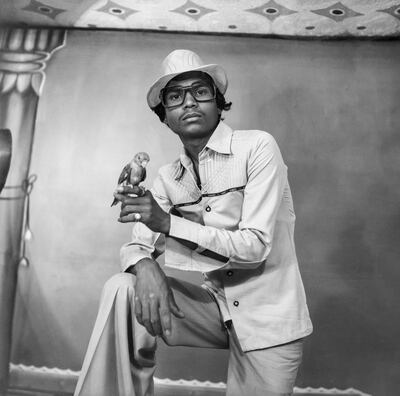India has a rich history of art reflecting its religious, linguistic and ethnic diversity. Spanning more than 10,000 years, from prehistoric cave art in Bhimbetka, near Bhopal in central India, to Mohenjo-Daro figurative art found in stone seals, Gupta-era Ajanta caves, Mughal art and many other genres, including folk and tribal art.
But to date there has been no single source of information that students of art or enthusiasts can access. Unlike in the West, the histories of art, heritage and culture in the region are taught in specialised courses, at very few universities, and are rarely available online and almost never free of charge.
Map Academy’s digital Encyclopaedia of Art has launched to provide an accessible and extensive resource on art and artefacts from South Asia.

The project, which launched on April 21, was compiled with the Bengaluru Museum of Art & Photography, a private museum founded by art collector Abhishek Poddar. It seeks not just to display the evolution of art in the region, but to explain techniques and materials used. It attempts to tell an inclusive story, by including not only well-known artists, but also focusing on less-known talents and folk artists.
“The Map Academy Encyclopaedia of Art covers the histories of art from across the Indian subcontinent. Currently a majority of our content focuses on art from within the modern geographic boundaries of India, and we are in the process of expanding to include broader histories of South Asia,” says Nathaniel Gaskell, founder and director of Map Academy.
The encyclopaedia is organised by nine broad departments – architecture, craft, design, living traditions, modern and contemporary art, photography, popular culture, pre-modern art and textiles. From mudras in Buddhist art to Pahari manuscript painting, which flourished in the foothills of the Himalayas, the technique of gesso painting and Chola bronze sculptures, you can access information in a second.
“The encyclopaedia is written and compiled by a team of researchers, writers and editors who work and collaborate remotely across India, South-East Asia, Europe and the US,” Gaskell says. “Our approach to such a vast subject has been systematic, with the nine department categories serving as an entry point into histories of art that are as broad as they are deep. Our work is advised by a panel of scholars, writers and art practitioners from across the world, who make up our academic review panel.”

“Many books have been written and published about Indian art but sharing the knowledge of an encyclopaedia online is a great achievement, and will give to a wider and more international audience a complete overview of what our artists have achieved over the past thousands of years,” says Sonal Singh, Christie’s managing director, India.
“The combination of offering online courses is very sought after, and adds another layer to the understanding of Indian art history.”
The aim of the encyclopaedia is to “make art histories more widely accessible, based on the idea that doing so can have a positive social impact through broadening perspectives on humanity, heritage and culture".
“The resource is for everyone, from the casual, curious reader to students, researchers, scholars, academics and teachers, who may use the resource in ways that suit their particular requirements – as a learning tool, as a take-off point for further discovery within the subject or as material that might bolster their own research,” Gaskell says.

He hopes that, through the digital encyclopaedia, art from the region will reach a broader, international audience.
“Among the very few art history programmes from around the world delivered online, almost none focus exclusively on the interconnected histories of art within the Indian subcontinent, instead the discipline remains encumbered by Euro-American-centric narratives that often neglect, or fail to do enough justice to art histories of the global south. Being online, we hope to reach a wider audience than has ever been possible in the subcontinent, considering those living outside urban centres in South Asia have greater access to the internet and mobile phones.”
While there have been books written on Indian art over the years, this is the first comprehensive attempt to compile assets into an encyclopaedic format online that is accessible to all. The project also attempts to tell a more inclusive story of the history of Indian art. The team has ensured fair representation to gender and caste hierarchies, which is evident when going through the entries and seeing digital entries that represent jatra, a form of Bengali folk theatre, to Buta Kola, a form of spirit worship. It is a dive into less-known indigenous and folk-art forms.
“The encyclopaedia seeks to address many of the limitations that have long affected the study of art in the region,” Gaskell says. “That includes the underrepresentation of certain art forms, especially due to the distinctions placed between ‘high’ and ‘low’ art, the historical tendency of leaving out certain communities in the wider narrative, on the basis of gender, caste and other forms of socio-economic and political hierarchies.”
While the two primary offerings of the Map Academy – the Encyclopaedia of Art and online courses – cover a wide range of themes, from textiles to sculpture and archaeology, they also publish a blog, which features explorations into art history, written in-house by their researchers and editors, based on their own areas of interest. They are also working on a timeline of art histories from the region, as well as a podcast.
Explore the Map Academy’s digital Encyclopaedia of Art at mapacademy.io





